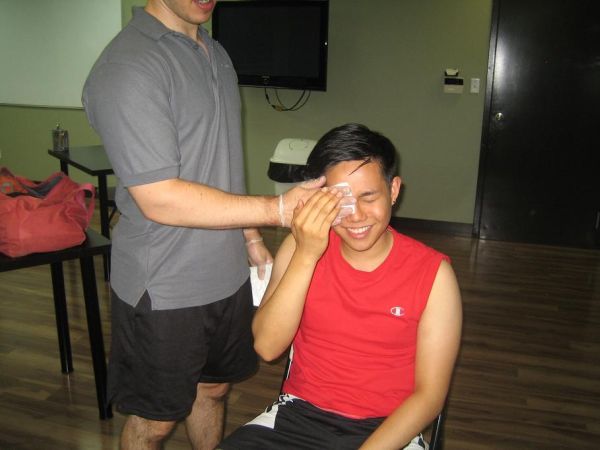
Orbital rim fractures are typically caused due to a direct blow to the face. This is most common in automobile accidents. Orbital rim fractures require a lot of force; therefore the casualty is likely to have other injuries such as facial bone injuries, brain injuries and injuries to the eye itself such as an optic nerve, the tear duct, sinuses around the eye and the sensory nerves in the cheeks.
An indirect orbital floor fracture takes place when the rim of the eye socket is intact however; the paper think eye socket floor gets ruptured or cracked. This usually results in a tiny hole in the eye socket floor, thus affecting the surrounding muscles of the eyeball, thereby, preventing the eye to move properly. This may cause double vision.
Another type of eye socket fracture involves a fracture that involves both the socket floor and the rim.
The material posted on this page on eye socket fractures and head injuries is for learning purposes only. To learn to recognize and manage head, neck and facial injuries enroll in a first aid and / or CPR course today.
Signs and Symptoms
Signs and symptoms usually depend on the severity and location of the fracture:
- Black eye: swelling, black/blue discoloration of the skin around the eye, redness, bleeding on the white area of the eye, bleeding of the eyelids
- Difficulty looking left, right, up and down
- Double vision, blurry vision or impaired vision
- Numbness of the eyelids, forehead, upper lip, check, teeth
- Puffiness of the skin around the eye
- Swelling or deformity of the forehead or check
- Cheek may appear to be abnormally flat
- Severe cheek in the pain, especially when you try to open your mouth
When to seek medical attention
Seek immediate medical attention if you have any symptoms of eye socket fracture.
See your health your health care provider if you see floaters or flashing lights after any eye injury.
Treatment
Treatment depends on the location and severity of the injury. You may be directed to apply ice packs and use decongestants and antibiotics to prevent infection in case of a mild fracture that does not cause any vision problems or affect the movement of the eyeball. The doctor will recommend rest for a few days and preventing yourself from blowing your nose until symptom resolve.
In case of severe fractures, you may be referred to a specialist (a plastic or reconstructive surgeon) for treating eye injuries. You may be treated by an ophthalmologist in case of any vision problems such as blurred or double vision.

